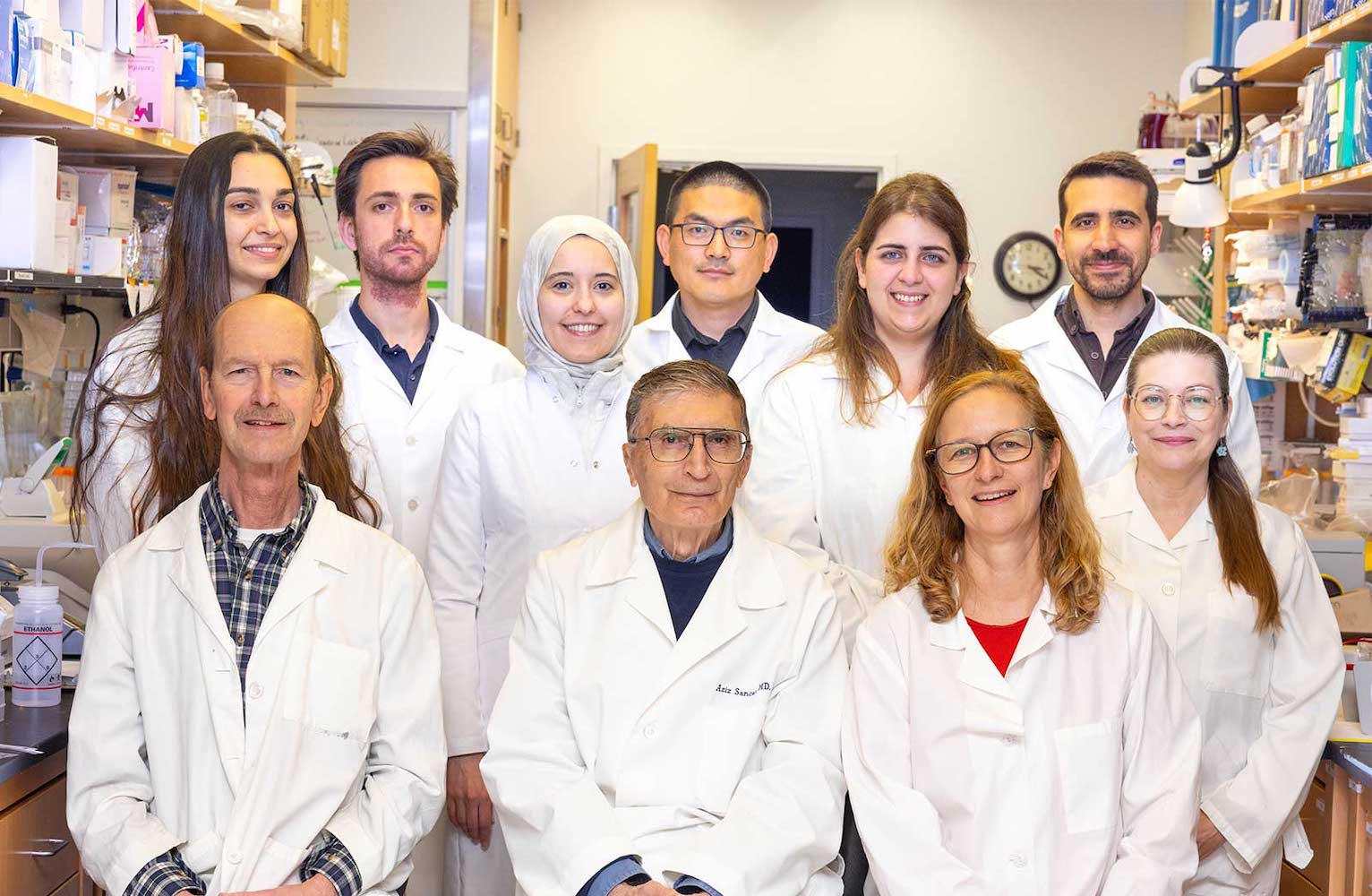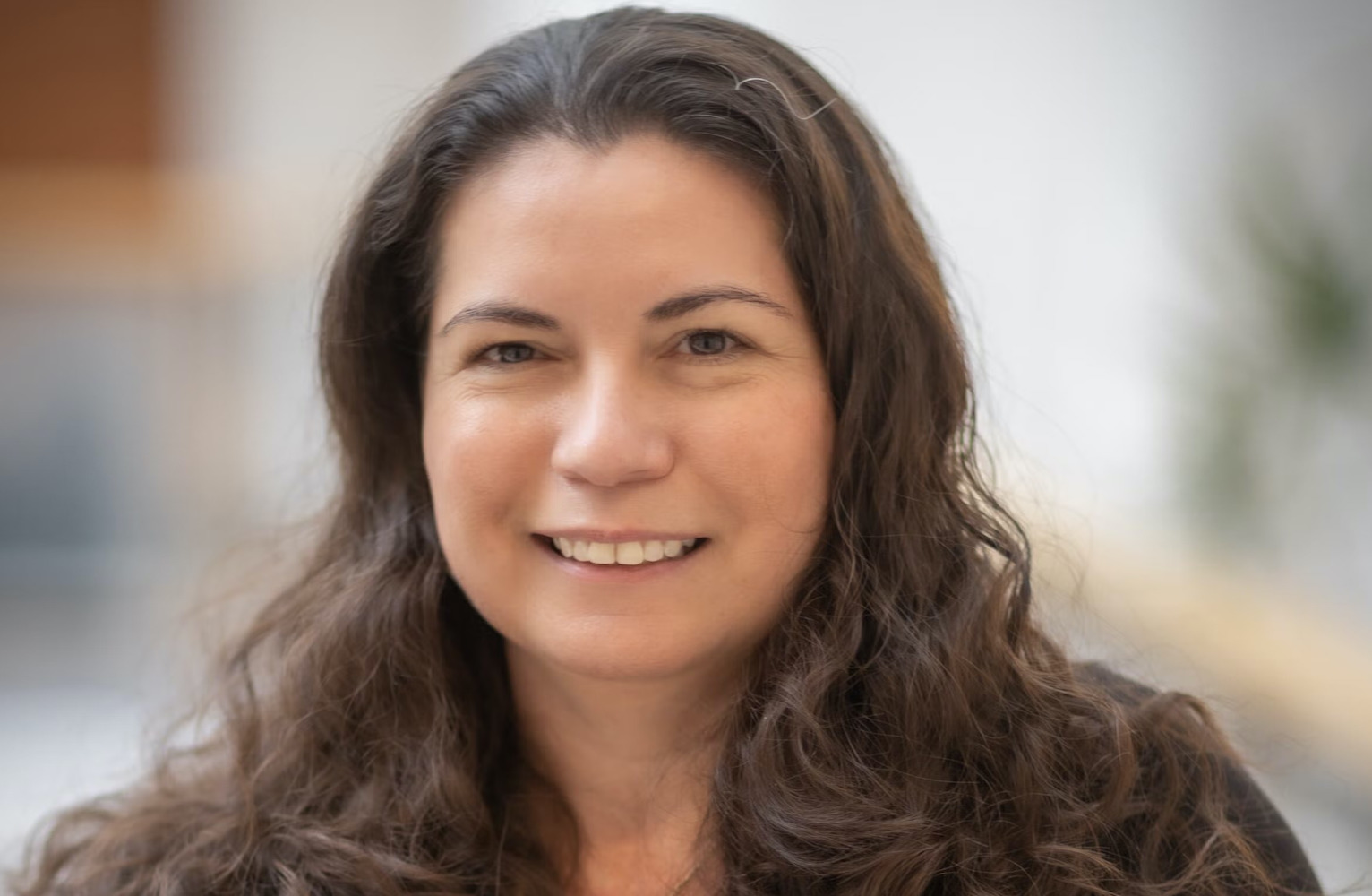
Aziz Sancar and his team are exploring how a routine lab chemical might become a breakthrough in brain cancer research.
Hearing the word “glioblastoma” can be life-altering for patients and their loved ones. These aggressive brain tumors grow quickly, and can spread throughout the brain, making them extraordinarily challenging to remove with surgery. Because they’re in the brain, many medications cannot reach these tumors effectively—and fewer than 10% of adult patients diagnosed with glioblastoma survive more than five years.
Recently, researchers in the lab of UNC molecular biologist and Nobel laureate Aziz Sancar discovered that a common lab chemical called EdU may have potential as a glioblastoma treatment. EdU can cross into the brain and appears to specifically target cancerous cells, potentially helping to shrink these elusive tumors.
In a recent study, Sancar’s lab worked with the Screening Live Cancer Explants (SLiCE) team, led by Andrew Satterlee, a cancer researcher at the UNC Eshelman School of Pharmacy and a current K12 scholar at the North Carolina Translational and Clinical Sciences (NC TraCS) Institute. The SLiCE platform seeds cancer cells or patient tumors on top of living substrates made of brain tissue. This setup maintains tumors in an environment they recognize, helping them act like they do in the patient’s body.
This technology enabled researchers to get an in-depth look at how EdU affects both healthy and cancerous brain tissue—and take a meaningful step toward the possibility of developing a new medicine for a debilitating disease.
Treating brain cancer is especially complicated because of the blood-brain barrier, a layer of cells that prevents many substances from reaching the brain. This layer helps to keep things like pathogens out of the brain—but it can also keep out many medications.
Temozolomide is one of the few chemotherapy drugs that can cross this barrier, and when a patient is diagnosed with a glioblastoma, temozolomide is often part of their treatment plan. But more than half of all glioblastoma patients don’t respond to the medication, and even those who do don’t generally live very long with the disease.
EdU, or 5-Ethynyl-2′-deoxyuridine, was not designed as an anti-cancer drug. Instead, EdU is mostly used as an analogue for thymidine—one of the four building blocks of DNA—so dividing cells recognize it as thymidine and incorporate it into their DNA. This allows researchers to track things like cell division and DNA repair by following where EdU is taken up.
Sancar and his colleagues have used EdU to study DNA repair, and a few years ago, they discovered that when EdU is incorporated into a cell’s DNA, the cell sees it as a damaged section of genetic code and tries to repair it. The research team speculated that if a cell had a regular supply of EdU and consistently kept adding more EdU to its DNA instead of thymidine, that could trigger a vicious cycle of endless DNA repair, eventually causing the cell to die.
That’s where the idea of using EdU as a cancer treatment was born. EdU is incorporated into a cell’s DNA when that cell divides and replicates—and cancerous cells divide and replicate far more often than normal cells. The researchers hypothesized that if a person was dosed with EdU, cancerous cells would take up EdU more often than normal cells, essentially targeting the cancerous cells for the vicious cycle of DNA repair and eventual death. What’s more, EdU can cross the blood-brain barrier, meaning it could potentially be used to reach tumors that sit deep inside the brain.
Sancar and his team are now conducting some follow-up studies to explore additional facets of EdU’s potential as an anti-cancer drug. While the results so far are encouraging, there’s still a long way to go before EdU could reach the clinic. Any new drug undergoes a series of rigorous clinical trials to ensure it is both safe and effective in actual patients, not just tumors growing in a lab.
But for glioblastoma, which has long evaded researchers’ efforts to find new therapeutics, this study offers a meaningful step forward—and the properties EdU has shown here make it an exciting candidate for potential drug development.
“It is a wonderful feeling to think someday soon, EdU could be an added arsenal in the anti-cancer toolkit,” Adefolaju says. “Being part of that initial development is not only surreal but an absolute honor.”‘
“To see this fruitful collaboration reveal that EdU may one day help people facing such a devastating diagnosis is deeply moving,” Kaanoglu adds. “For me, knowing that our work could touch a patient’s life and offer even a little more hope is the most fulfilling part of doing research.”
Story originally published by Ethan Freedman, UNC School of Medicine.
Related Stories




